In the area of ​​Internet TV, micro-whales can be regarded as having "golden keys" born. Leading by legendary television industry Li Ruigang, relying on Chinese culture, Alibaba, Tencent and other high-quality resources, coupled with the strong integration of former New Weekly executive editor Feng Xincheng and music poet Li Jian, made it possible for the embryo period. Wide attention from people in and outside the industry.
Whether the WTV55K1 can stand the test of reality under the shadow of numerous auras? Today's dismantling may help everyone uncover the mystery of the "Idol Pie" smart TV.
Appearance details
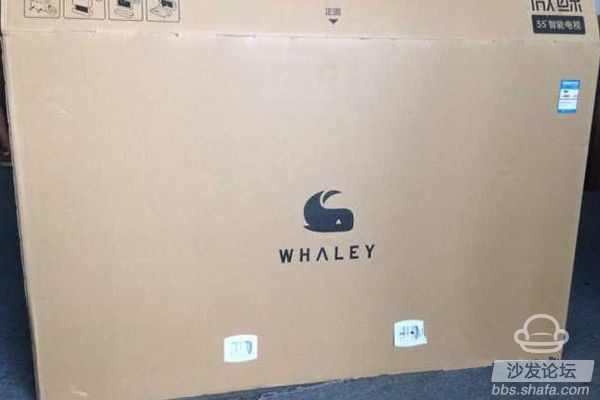
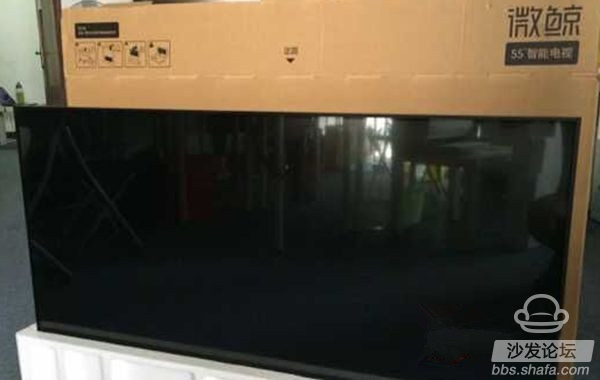
After opening the box, you can see that the main body including the surrounding frame is black, giving a calm feeling, and the overall style is simple and clear.
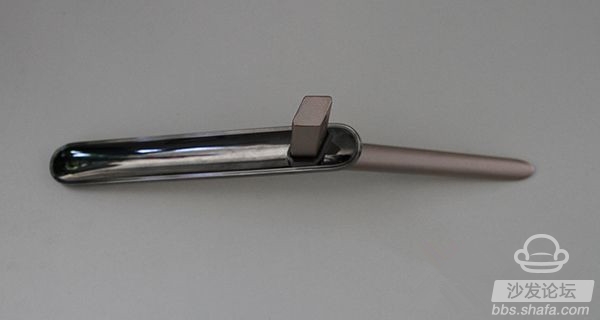
The colors in front and behind the tripod are not uniform. The front exposed part is dark gray, and the latter part of the color is similar to the "Taga gold" in the Apple series. After an easy installation, the TV can "stand up".
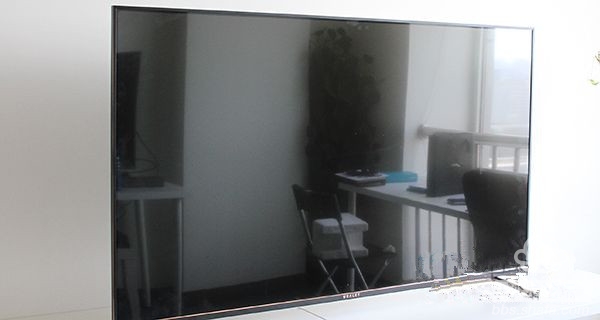
The front of the fuselage is printed with a gold-colored micro whale logo in the middle of the lower border, and there is no extra decoration. The visual effect of the border is comfortable and the actual width is 6.8mm. The appearance of television cannot escape this "display + border" design. If we must innovate in this area, we may have to wait for the "trendless TV" trend. According to the current situation, besides improving the screen share of the machine and the gimmick on publicity, there is no significant practical effect on the user experience. It can be said that the 2.8mm design of the Micro Whale TV is a pragmatic choice while embodying the craftsmanship.
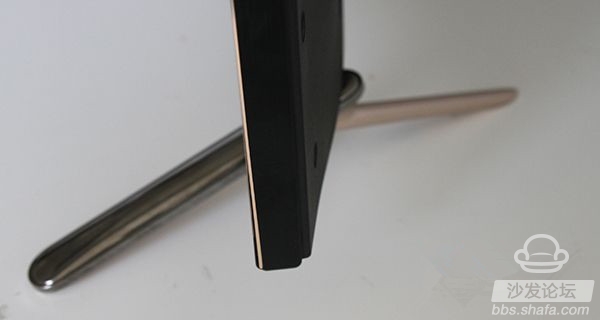
The body thickness is within 2cm. Perhaps only after the next session will you really realize that as a TV, it is not easy to achieve this thickness.
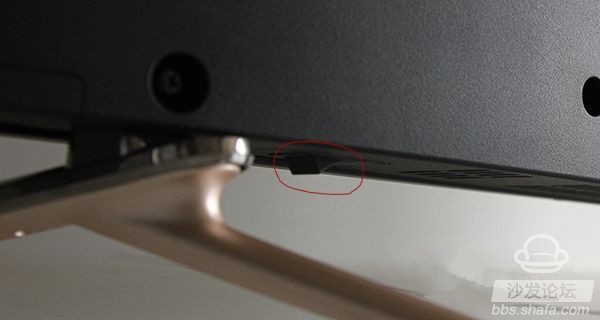
The key is designed to the bottom of the fuselage. Not only does saving space do not affect the appearance. Although the design of touch buttons is very popular at present, under the same effect, the physical buttons have a lower cost and are more in line with the user's operating habits, especially for middle-aged and elderly users.

The design of the back of the fuselage is also simple, with a tiny whale logo printed in the middle, and evenly distributed with no covering screw around. The upper part is an entire row of barrier-type heat dissipation design, and the concave shape in the lower right corner is a variety of jacks.

From left to right are the audio output, HDMI1, two USB3.0, SD card, and ordinary USB interfaces.
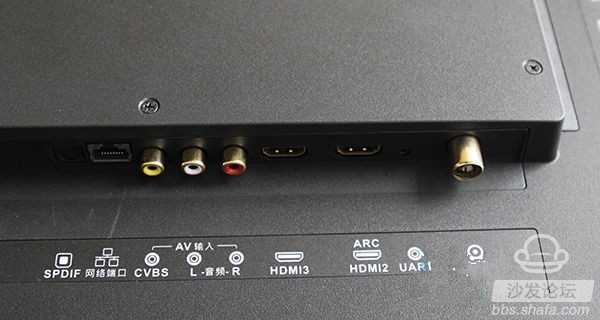
The decibel from left to right is SPDIF, network port, AV input, HDMI3, HDMI2/ARC, UART, antenna input interface.

At the bottom right is the physical control key, similar to the remote control's arrow and OK keys. Compared with the remote control, this set of control keys has higher sensitivity.
Disassemble time
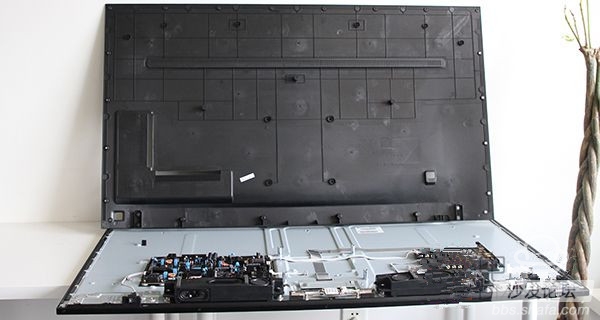
In the first step, unscrew all visible screws on the back of the camera to remove the black rear cover. The main chip and circuit board are concentrated in the lower part of the product. This design undoubtedly increases the stability of the fuselage.

The two mainboards are located on the two sides of the TV. Two speakers are located under the main board. The middle metal board protects the LG control chip.
It seems that the internal design of smart TVs is not as complicated as we imagine. From the layout point of view, similar to the teardown situation of similar products. In a sense, the standardized design and manufacturing processes provide the basis for rapid development for the back-to-back manufacturers. This may be one of the reasons that Micro-Whale Technology can release mature products within four months of its establishment.
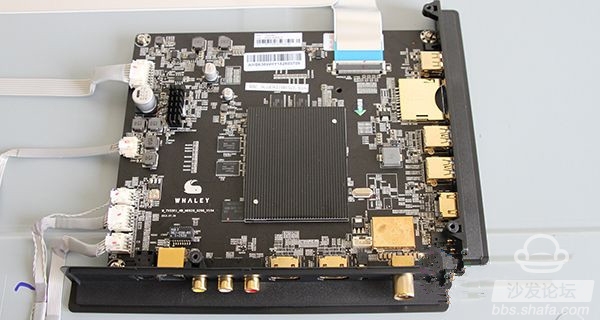
The circuit board on the right is more precise than the left one and is also the core component. The middle CPU is covered with a protective layer with a metal dot inlay and it is difficult to disassemble. This detail reflects the design intention of the micro-whale circuit board. According to official information, Electric Technology understands that the Whale TV WTV55K1 uses the latest 64-bit processor chip, the Mstar Cortex A53 quad-core processor, clocked at 1.4GHz. Built-in 8G storage space, 2G operating memory, and full support for H.265 10bit hard decoding.
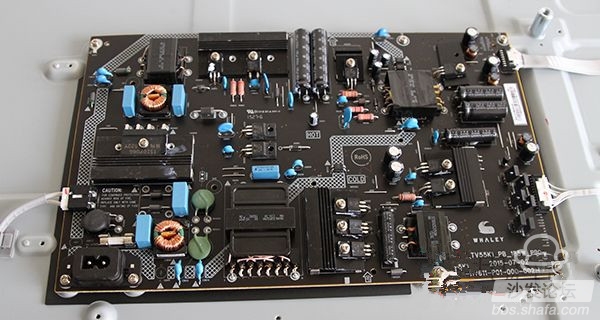
The layout of the circuit board on the left is larger than on the right side, and there is no compact circuit on the right side of the layout. Logos for micro whale are printed on both boards. Professionals may have noticed that both circuit boards use black PCB boards. Compared with other colors, the circuit traces on the black boards are harder to identify and the difficulty in research and development is even greater. This may reveal that the cost of the microwhale circuit board is twice the cost of the traditional brand pistol shape motherboard. Even compared to some new televisions that have made great progress in the use of materials compared to traditional brands, the state of the motherboards that the micro-whale TV presents after dismantling is not shy. At present, the micro-whale official has not given a clear answer on the warranty time of the motherboard. Is this because of confidence in their products?

Sound quality is one of the highlights of the micro whale television campaign. The bass/treble Bass/Treble configuration plus two speakers together create the HIFI sound quality of the Micro Whale TV. Different from the external sounds of some smart TVs on the market, the built-in sound once again embodies the simple design concept of the micro whale. In addition to eliminating the extra installation process, this design saves space. The configuration of the left and right audio amplifiers is as good as the external audio.
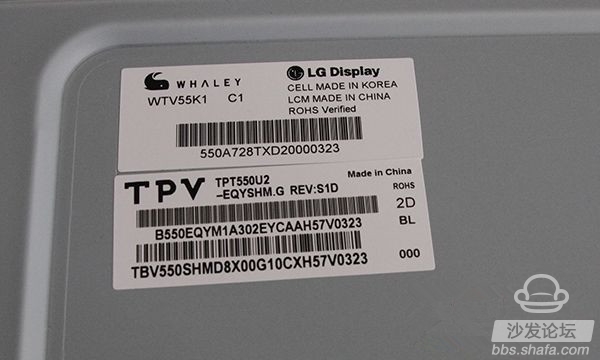
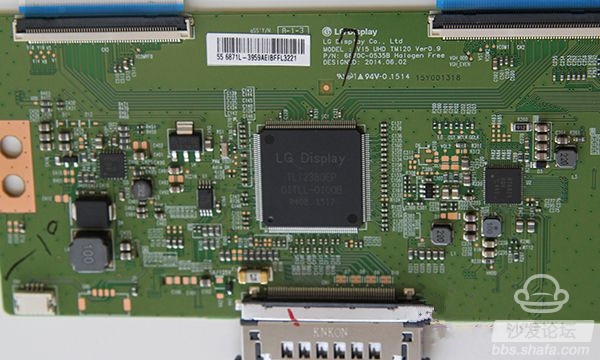
From the inside of the fuselage, we can see that the small whale TV uses a 55-inch LG original IPS hard screen. It is reported that the screen uses non-printing light guide technology, which increases the light efficiency of traditional printed light boards by up to 10%.
In the next dismantling process of the screen, we can see that the complete LCD screen is composed of two polarizer plates, two glass plates plus liquid crystal and backlight. The light projected by the backlight first passes through a polarizer and then passes through the liquid crystal. The alignment of the liquid crystal molecules will change the angle of light passing through the liquid crystal. The light must then pass through the front color filter and the other one. The polarizer can finally display the image.
As the most critical part of the TV, the use of LG displays for the micro-whale TV will have a certain increase in cost, and there is no doubt that the quality guarantee is solid.
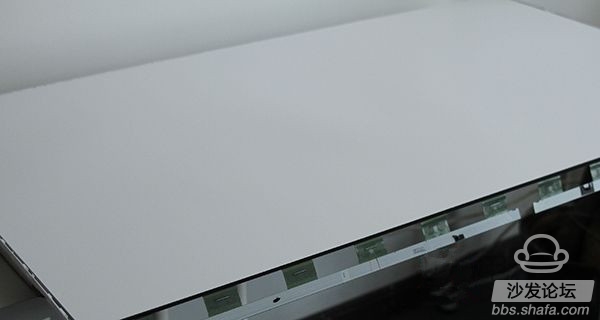
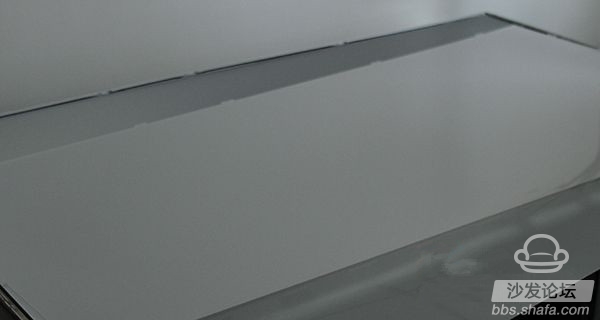
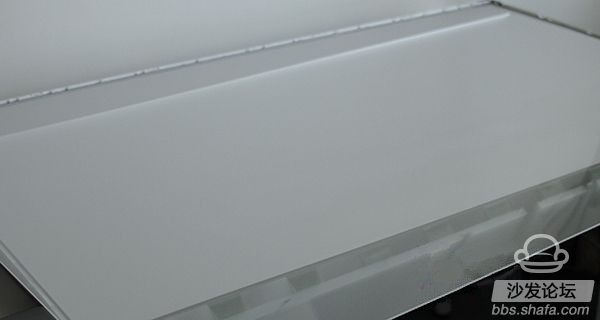
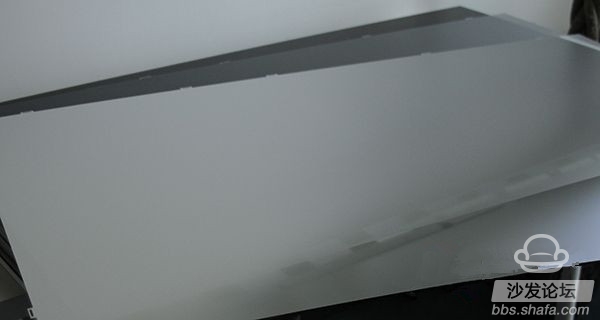
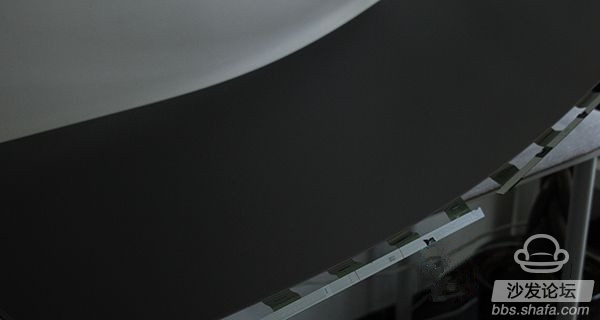
From the last picture, we can see that the so-called IPS hard screen is not as "hard" as it sounds, and it can be bent with a little external force. This is a misunderstanding of many consumers in their understanding. The most intuitive difference between hard and soft screens is whether water-streaked deformation will occur. The two belong to the same physical structure of liquid crystal, the essential difference is that the arrangement of molecules is different. The hard-screen liquid crystal molecules are arranged horizontally, and the soft screen is arranged vertically. Compared to the soft screen, the hard screen responds faster, so the picture is smoother. LG's IPS technology can be regarded as a model of hard screen technology.
Dismantling here comes to an end. Let's take a look at all the parts.
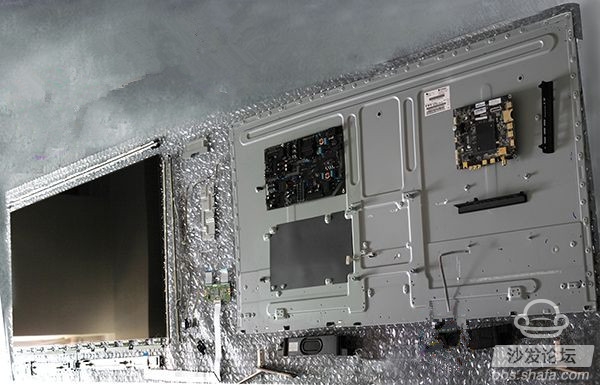
In this destructive dismantling process, we can feel the solid material and precise assembly of the micro whale. This part of the pendulum may be the real “heart†of the simple appearance of the micro-whale TV.
At present, the price of a micro-whale TV is 3,799 yuan, which is a lot cheaper than a millet-sized TV that is known for its cost performance. Coupled with certain congenital advantages of content resources, and the gorgeous appearance of many "stars", can micro-whales become the "rising stars" of the Internet TV circle?
Whether the WTV55K1 can stand the test of reality under the shadow of numerous auras? Today's dismantling may help everyone uncover the mystery of the "Idol Pie" smart TV.
Appearance details

The packaging is simple and strong. The energy efficiency label on the packaging is Class 3 high energy consumption, and passive standby power is 0.5 watts.

After opening the box, you can see that the main body including the surrounding frame is black, giving a calm feeling, and the overall style is simple and clear.

The colors in front and behind the tripod are not uniform. The front exposed part is dark gray, and the latter part of the color is similar to the "Taga gold" in the Apple series. After an easy installation, the TV can "stand up".

The front of the fuselage is printed with a gold-colored micro whale logo in the middle of the lower border, and there is no extra decoration. The visual effect of the border is comfortable and the actual width is 6.8mm. The appearance of television cannot escape this "display + border" design. If we must innovate in this area, we may have to wait for the "trendless TV" trend. According to the current situation, besides improving the screen share of the machine and the gimmick on publicity, there is no significant practical effect on the user experience. It can be said that the 2.8mm design of the Micro Whale TV is a pragmatic choice while embodying the craftsmanship.

The body thickness is within 2cm. Perhaps only after the next session will you really realize that as a TV, it is not easy to achieve this thickness.

The key is designed to the bottom of the fuselage. Not only does saving space do not affect the appearance. Although the design of touch buttons is very popular at present, under the same effect, the physical buttons have a lower cost and are more in line with the user's operating habits, especially for middle-aged and elderly users.

The design of the back of the fuselage is also simple, with a tiny whale logo printed in the middle, and evenly distributed with no covering screw around. The upper part is an entire row of barrier-type heat dissipation design, and the concave shape in the lower right corner is a variety of jacks.

From left to right are the audio output, HDMI1, two USB3.0, SD card, and ordinary USB interfaces.

The decibel from left to right is SPDIF, network port, AV input, HDMI3, HDMI2/ARC, UART, antenna input interface.

At the bottom right is the physical control key, similar to the remote control's arrow and OK keys. Compared with the remote control, this set of control keys has higher sensitivity.
Disassemble time

In the first step, unscrew all visible screws on the back of the camera to remove the black rear cover. The main chip and circuit board are concentrated in the lower part of the product. This design undoubtedly increases the stability of the fuselage.

The two mainboards are located on the two sides of the TV. Two speakers are located under the main board. The middle metal board protects the LG control chip.
It seems that the internal design of smart TVs is not as complicated as we imagine. From the layout point of view, similar to the teardown situation of similar products. In a sense, the standardized design and manufacturing processes provide the basis for rapid development for the back-to-back manufacturers. This may be one of the reasons that Micro-Whale Technology can release mature products within four months of its establishment.

The circuit board on the right is more precise than the left one and is also the core component. The middle CPU is covered with a protective layer with a metal dot inlay and it is difficult to disassemble. This detail reflects the design intention of the micro-whale circuit board. According to official information, Electric Technology understands that the Whale TV WTV55K1 uses the latest 64-bit processor chip, the Mstar Cortex A53 quad-core processor, clocked at 1.4GHz. Built-in 8G storage space, 2G operating memory, and full support for H.265 10bit hard decoding.

The layout of the circuit board on the left is larger than on the right side, and there is no compact circuit on the right side of the layout. Logos for micro whale are printed on both boards. Professionals may have noticed that both circuit boards use black PCB boards. Compared with other colors, the circuit traces on the black boards are harder to identify and the difficulty in research and development is even greater. This may reveal that the cost of the microwhale circuit board is twice the cost of the traditional brand pistol shape motherboard. Even compared to some new televisions that have made great progress in the use of materials compared to traditional brands, the state of the motherboards that the micro-whale TV presents after dismantling is not shy. At present, the micro-whale official has not given a clear answer on the warranty time of the motherboard. Is this because of confidence in their products?

Sound quality is one of the highlights of the micro whale television campaign. The bass/treble Bass/Treble configuration plus two speakers together create the HIFI sound quality of the Micro Whale TV. Different from the external sounds of some smart TVs on the market, the built-in sound once again embodies the simple design concept of the micro whale. In addition to eliminating the extra installation process, this design saves space. The configuration of the left and right audio amplifiers is as good as the external audio.


From the inside of the fuselage, we can see that the small whale TV uses a 55-inch LG original IPS hard screen. It is reported that the screen uses non-printing light guide technology, which increases the light efficiency of traditional printed light boards by up to 10%.
In the next dismantling process of the screen, we can see that the complete LCD screen is composed of two polarizer plates, two glass plates plus liquid crystal and backlight. The light projected by the backlight first passes through a polarizer and then passes through the liquid crystal. The alignment of the liquid crystal molecules will change the angle of light passing through the liquid crystal. The light must then pass through the front color filter and the other one. The polarizer can finally display the image.
As the most critical part of the TV, the use of LG displays for the micro-whale TV will have a certain increase in cost, and there is no doubt that the quality guarantee is solid.





From the last picture, we can see that the so-called IPS hard screen is not as "hard" as it sounds, and it can be bent with a little external force. This is a misunderstanding of many consumers in their understanding. The most intuitive difference between hard and soft screens is whether water-streaked deformation will occur. The two belong to the same physical structure of liquid crystal, the essential difference is that the arrangement of molecules is different. The hard-screen liquid crystal molecules are arranged horizontally, and the soft screen is arranged vertically. Compared to the soft screen, the hard screen responds faster, so the picture is smoother. LG's IPS technology can be regarded as a model of hard screen technology.
Dismantling here comes to an end. Let's take a look at all the parts.

In this destructive dismantling process, we can feel the solid material and precise assembly of the micro whale. This part of the pendulum may be the real “heart†of the simple appearance of the micro-whale TV.
At present, the price of a micro-whale TV is 3,799 yuan, which is a lot cheaper than a millet-sized TV that is known for its cost performance. Coupled with certain congenital advantages of content resources, and the gorgeous appearance of many "stars", can micro-whales become the "rising stars" of the Internet TV circle?
Passive Stylus Pen,Custom Stylus Pen,Stylus Pen For Surface,Smart Stylus Pen
Shenzhen Ruidian Technology CO., Ltd , https://www.wisonens.com
